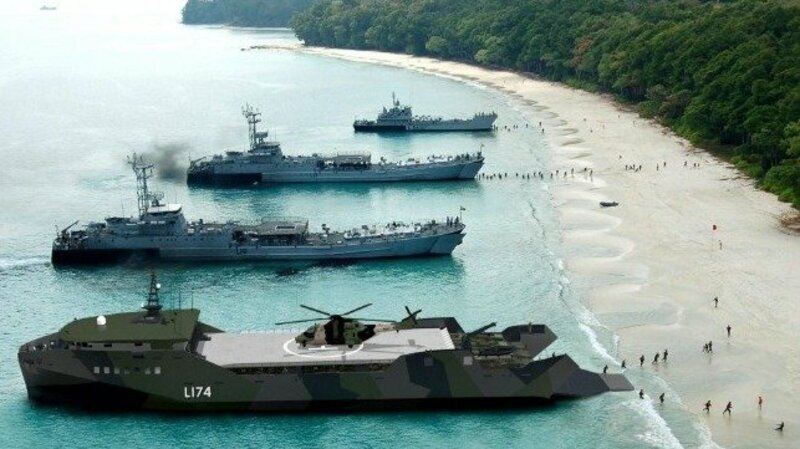The Navy and Marine Corps are finalizing a list of requirements for the Light Amphibious Warship that Marine leadership argues is key to how the service will fight its future island-hopping campaigns.
The services pitch LAW as a medium amphibious warship with a small crew that can haul 75 Marines from shore to shore without tying up the Navy’s larger amphibious ships for smaller operations, for the price tag of $150 million or less per hull.
“You look at the existing portfolio and you have our existing globally deployable, long duration, multipurpose amphibious warfare, L-class ships. And then you have the smaller complementary surface connectors that go in those L-class well decks, but there is the gap there in between the large multipurpose amphibs and the surface connectors. We’re back to needing the capability once again for a medium-sized landing ship. And that’s what the Light Amphibious Warship is intended to fulfill,” Capt. Scott Searles, the program manager for PMS 317 that oversees the amphibious assault and connector programs, said Thursday.



 Marines
Marines Government Contracts
Government Contracts


